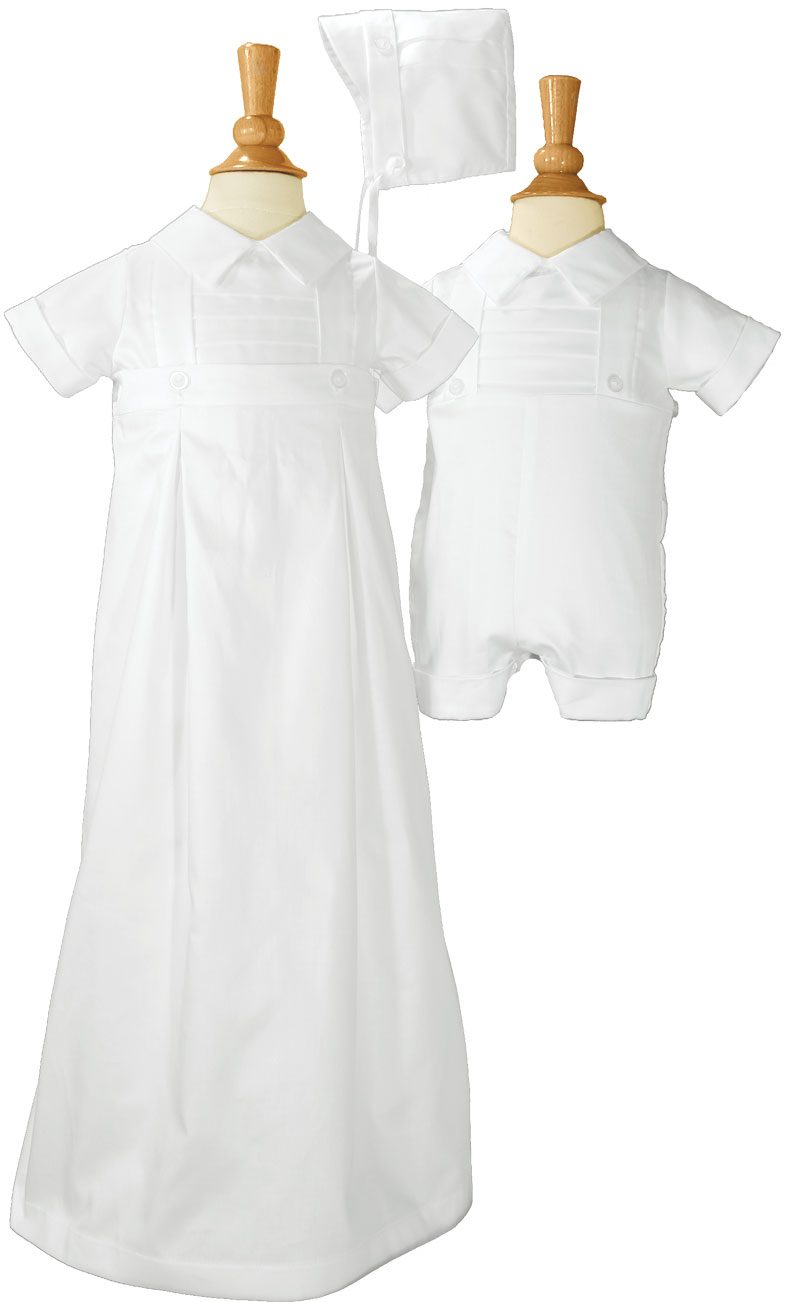In the process of choosing a christening gown there is a lot to consider. Especially when considering christening gown styles there are heirloom quality gowns, shantung gowns, customizable gowns. The fabric of the gown is also an important aspect to think about, as well as color, detailing, and fit.
Heirloom Gowns
Often when heirloom is used to describe a gown, especially with christening attire, it refers to gowns that have been passed down within a family to use for christening ceremonies. It can also mean that the gown is a high quality dress (heirloom style gown) made from natural fibers with details like embroidery and eyelets.
Shantung Gowns
The word shantung refers to a "dress fabric spun from tussore (silk from the tussore moth) silk with random irregularities in the surface texture." These random irregularities gives the silk fabric a slubbed appearance. This natural slubbing shouldn't be mistaken as flaws or damaged silk, but as something that adds texture and interest to the fabric. Shantung fabric it perfect for christening gowns because of how it drapes.
 Customizable Gowns
Customizable Gowns
The option of customizing a gown with your child's name embroider on the dress is done by some companies. There are also gowns that have detachable features such as bows, sashes, and trains. Another customizable option are unisex convertible gowns that have a skirt for girls that detaches to reveal a romper outfit underneath for boys.
Fabric
When it comes to fabric, it is important to choose a fabric that is breathable and comfortable for you child. Cotton, silk, and linen are often used to fit this criteria.
Traditionally the following fabrics have been used to make gowns:
- Cotton
- Raw silk
- Linen
- Heirloom cotton
- Swiss Pima Batiste cotton
- Satin
- Organza
- Taffeta
- Tricot
- Gabardine fabric is used often for boys christening outfits.
A variety of cotton fabrics are used in gowns, such as:
- Polyester blends.
- Bubble gauze is a plain cotton.
- Broadcloth is ideal for holding details such as creases and beading.
- Cotton interlock is a stretchy, double knit, and lightweight.
- Sateen is made from cotton fibers that feels like silk that is smooth on one side and matte on the other side.
- Baptiste cotton is considered to be perfect for a gown because it is extremely light fabric.
Gown Colors
Historically christening gowns have have been completely white or a shade of white. White is symbolic of purity and innocence in religion. It has become more common to see white gowns with a blue ribbon going down the front of it or the color pink on the hem and sleeves of a gown. Some Irish style gowns may have a green shamrock or Celtic cross.
Gown Detailing
Christening gowns can have beautiful details such as embroidery, lace, bows, ribbons, and floral appliqués. Boys christening outfits can have pin tucking and bow ties.
When considering the detailing of a gown it is important to ask some of the following questions:
- Does the detailing match the gown? For example, bright white lace may not look good on a silk dress (heirloom quality gowns) since silk is an off-white color.
- Are the buttons sewn onto the gown in a proper way?
Gown Fit and Comfort
You will want your child to be happy during the christening ceremony, so the fit of the gown is important as far as comfort goes and how it looks on your child.
The best place to start when considering fit is referencing the sizing chart for gowns. This will help you know how to take proper measurements to match your baby's measurement to size.
For a gown to be comfortable for a baby it should fit in a way that your baby can move freely in the outfit or gown. Also, a baby's skin is sensitive, as a result a soft fabric should always be used for christening gowns.
Related Blog Post:
How to Choose a Christening Gown
History of Lace and Christening Gowns
How to Choose a Christening Gown
Feltman Brothers Vintage Children's Clothing
